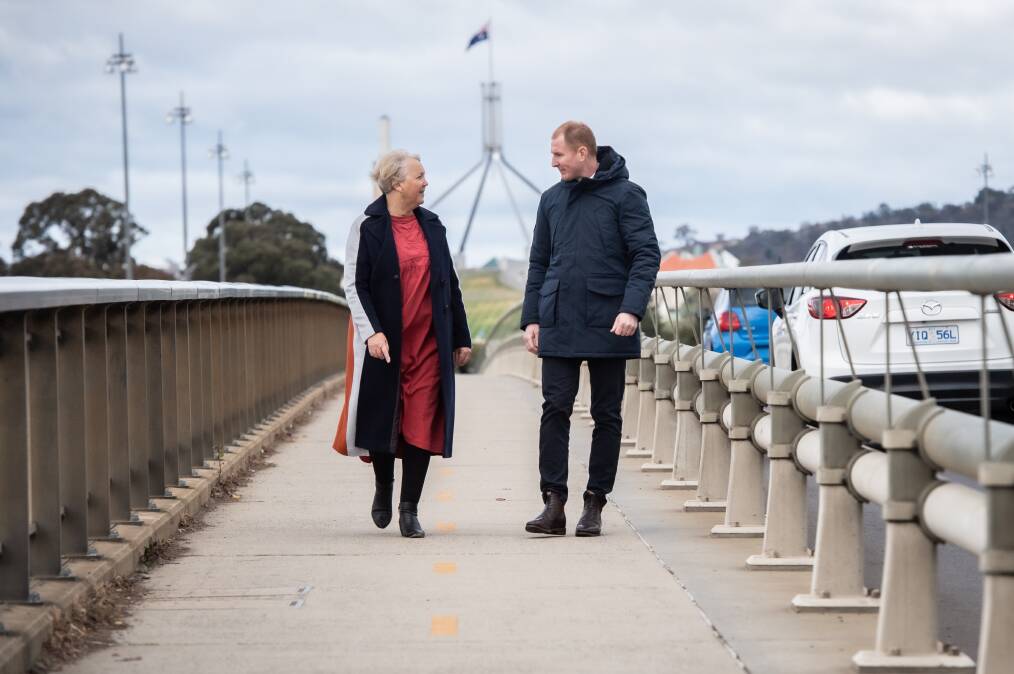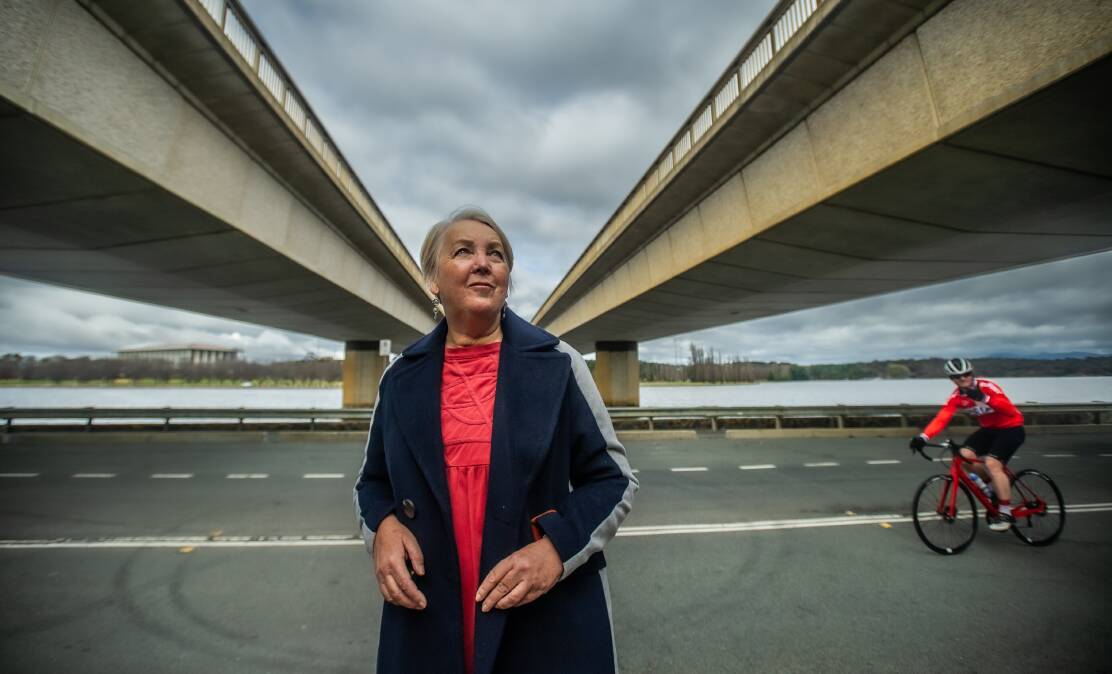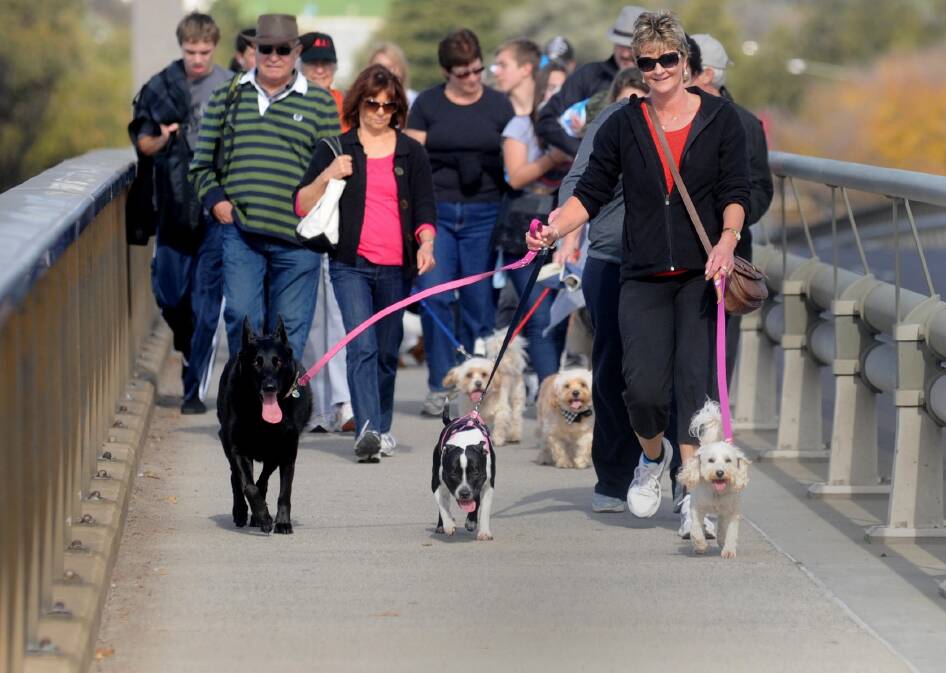
One of Canberra's iconic landmarks - Commonwealth Avenue Bridge - will be widened on each side by more than two metres to create less congested footpaths as part of a $137 million overhaul, making the popular bridge-to-bridge walk safer for pedestrians, cyclists and scooter riders.
The bridge upgrade, funded by the Commonwealth and managed by the NCA, is entirely separate to any plans by the ACT government for an extension of the light rail south from the city to Woden. If that does go ahead, the light rail route would likely be accommodated on a separate structure between the spans of the bridge.
The National Capital Authority is close to announcing the successful tenderer for the design of the Commonwealth Avenue Bridge renewal, which will also involve the nearly 60-year-old structure being reinforced and brought up to standard for load capacity, traffic lane width and safety barriers.
It will also mean significant traffic disruption, with construction likely to continue over at least one year - from 2023 to the 2024-25 financial year. The plan is for one side of the dual carriageway to be open to vehicles while the other side is being upgraded.
One of the major changes in the bridge renewal is to more than double the width of the shared pedestrian and cycleway paths on the bridge from 2.4 metres to 5 metres, bringing them up to Australian standards. That is expected to mean extensions along the length of the 310-metre bridge on its mostly easterly edge and most western edge to create the wider paths, adding more than two metres to both sides.

National Capital Authority chief executive Sally Barnes said while the $137 million had been allocated to the project, a full costing and design still needed to be put to the Parliamentary Standing Committee on Public Works. The tender for the design called for engineering ingenuity as well as architectural finesse to ensure the bridge maintained its iconic structure as one of the main routes over Lake Burley Griffin, leading from the city to Parliament House.
"Those tenders are now in, we haven't finished evaluating them but we're hoping, all goes well, we'll be able to announce a successful firm mid-July or August," Ms Barnes said.
The authority's director on the project, Greg Tallantire, said this week it was "aiming for around a 2023 construction start", with the tender to go to a firm that could provide both form and function.
"The challenge will be to maintain that slimline look of the bridge," he said.
"We've asked in the tender for designers to come up with a bespoke look. We're not looking for a generic bridge. The function needs to be there, but the elegance needs to remain."

The project got the green light from Infrastructure Australia last year to ensure the bridge, opened in 1963, remained structurally sound for another 50 years as well as improving its amenity and function.
Ms Barnes said when the bridge was built, it was to British standards, and it did not meet current minimum Australian safety standards while the actual structure was ageing and in need of renewal.
"The actual pylons are in really good nick and most of the work is like doing the re-stringing of a tennis racquet. We need to put steel through the spans of concrete and tighten the steel to create the strengthening," she said.
Ms Barnes said Kings Avenue Bridge would also eventually receive the same treatment, but no money was yet allocated or timeframe confirmed.
Since Commonwealth Avenue Bridge had been built almost 60 years ago, the population of Canberra had grown and the number and weight of vehicles travelling over the bridge had increased, also forcing the upgrade.
The traffic lanes across the bridge will be widened slightly but more lanes will not be added.
Mr Tallantire said managing traffic flow over the bridge during construction was a major priority.
"The idea is, and it won't be without a challenge, is that one span will shut down [at a time] and we'll collaborate with ACT government, when their works are happening further down [the road], to make sure we're not going against the tide with them and impacting the public more than we need to," he said.
Ms Barnes said the work was necessary, as the the bridge was bringing people to the lake.
"More people are going to be living in the city and this will be their playground. This is where they will exercise and socialise," she said.
"This is how the Griffins envisaged it, they always saw an active lake with people walking around and doing things and the parliamentarians always seeing people here so they remembered they weren't making decisions on their own, they're making it for the people."







